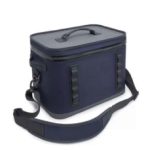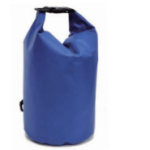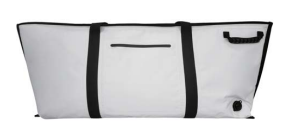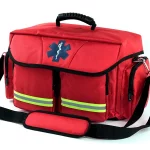Fish kill bags, commonly referred to as “kill bags,” provide an efficient means of storing and transporting your catch from boat, kayak, beach, bridge, dock or pier fishing trips. Moving it from the fish box of a boat directly into a cooler or cleaning station becomes much simpler with fish kill bags – you could even skip cleaning altogether by placing your catch directly into one! These versatile kill bags also boast insulation properties which help ensure freshness unlike traditional buckets can offer.
Here are the primary factors you should take into account when choosing an ideal kill bag for your fishing needs:

Size: The ideal bag size will depend on both your target fish species and available space. A 40-inch pike or snook won’t fit into a 30-inch bag; on the other hand, 60-inch bags may be too much unless you plan on making an extensive haul.
Materials: Kill bags are typically constructed out of either polyvinyl chloride (PVC) or thermoplastic polyurethane (TPU) tarpaulin. TPU bags tend to be more puncture and tear-resistant due to their thicker exterior coating; additionally, TPU provides superior insulation properties while not holding onto unpleasant smells that might come with their contents compared to PVC bags.
Insulation: Insulation is one of the key features of a quality kill bag. Since these bags often spend time out in all sorts of weather – be it sun, wind, rain or snow – they need to maintain the appropriate temperature for fish and ice in your catch without freezing over or spoiling. A well-insulated bag ensures freshness & avoids freezing or spoilage!
Sealing: How bags are assembled is important. Many use stitched seams that can then be sealed off to form a leak-proof structure, while others utilize more complex welding processes or glueing methods. Selecting an insulated bag offers maximum protection.
Closures: Most kill bags use zippers as their closure system. It is important to consider which kind of zipper will best meet your needs – metal, plastic or coated – when selecting one for marine environments due to exposure to saltwater. Metal zippers may corrode over time due to exposure; choose bags equipped with corrosion-resistant zippers instead for greater longevity.
Drainage: Adequate drainage is of the utmost importance, so when selecting bags with threaded caps or plug caps that offer reliable leak prevention. Threaded caps with textured surfaces are easier to handle when your hands are wet or slippery.
Design of Bottom: For optimal truck use, having a sturdy bag with an even and flat base is of paramount importance. This ensures stability during filling and avoids accidental tipping that could result in messy spills – something we wish to prevent at all costs!
Carry Your Fish Bag Efficiently: For effortless transport of ice and fish, look for bags with sturdy handles and adjustable shoulder straps with strong reinforcements – especially considering their combined weight – reinforced handles are vital in order to avoid accidents.
Testing: Though this cannot always be done before purchasing, filling your bag with ice and watching how it performs can provide invaluable insights. Check for insulation effectiveness, condensation levels and seam leaks – these hands-on observations will give you a deeper understanding of its overall performance.
Finding the ideal fish kill bag requires taking into account multiple considerations to ensure convenience, fish protection and product durability. By considering size, materials, insulation, sealing, closures drainage features tournament features bottom design handles handles bottom design handles handles as well as simple tests can you select one that complements your fishing style and needs ensuring it will help preserve quality and freshness of catch. Invest in quality kill bags today if you want the freshest catch!





